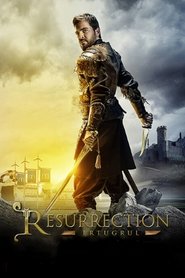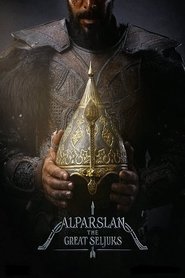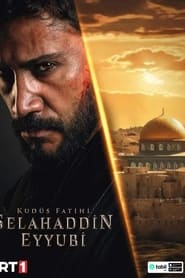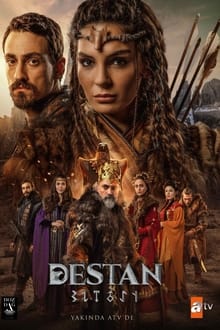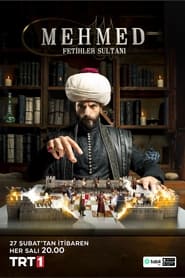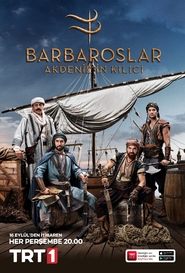
Barbaros English Subtitles
Barbaros English Subtitles on KayiFamilyTV, Hayreddin Barbarossa, also known as Hzr Hayrettin Pasha and Hzr Reis (c. 1466/1478 – 4 July 1546), was an Ottoman freebooter and Ottoman Navy crewmate. Barbarossa’s nonmilitary palms dominated the Mediterranean in the mid-16th century.
Khizr, from Lesbos, started his nonmilitary career as a freebooter under his older family, the Oruç Reis. Oruç became Sultan when the sisters took Algiers from Spain in 1516. Khizr adopted “Barbarossa” after Oruç’s death in 1518. (or “Redbeard” in Italian).
He also memorialised Hayreddin (from the Arabic Khayr announcement: Din, “virtuousness of the faith” or “style of the faith”). Barbarossa reclaimed the Peón de Algiers from the Spanish in 1529 in Barbaros English Subtitles on KayiFamilyTV.
Suleiman the Magnificent named Barbarossa Ottoman Navy Kapudan Pasha (GGrand Admiral) in 1533. He also led a delegation to France, captured Tunis in 1534, defeated the Holy League at Preveza in 1538, and fought with the French in the 1540s. Barbarossa was defeated in 1546 after retiring to Constantinople.
Barbaros English Subtitles Background
Khizr was born between 1466 and 1478 in Palaiokipos on Midilli (LLesbos) to an Ottoman sipahi father, Yakup Aa, from Giannitsa (now Greece), and an Orthodox Christian Greek mother, Katerina, from Mytilene (aalso Lesbos). Orthodox clerk’s widow, his mother.
They had Ishak, Oruç, Khizr, and Ilyas. In 1462 in Barbaros English Subtitles on KayiFamilyTV, Yakup helped the Ottomans conquer Lesbos from the Genoese Gattilusio family (who held the heritable title of Lord of Lesbos between 1355 and 1462) and received the arena of Bonova on the islet as a reward.
As a potter, he bought a boat to trade. Daughters are unknown, but the four boys assisted their father with his company. Khizr and Oruç first assisted with the boat and dinnerware.
Barbaros English Subtitles Early career
Linemate Hayreddin Barbarossa,
The four sisters navigated and traded internationally. Ilyas joined Oruç in seamanship. Khizr afterwards started his seafaring profession with his own boat. The sisters were seamen who pillaged the Mediterranean to avenge the Knights Hospitaller (Knights of St. John) in Barbaros English Subtitles on KayiFamilyTV, who were stranded on Rhodes until 1522.
Oruç and Ilyas worked throughout the Levant, between Anatolia, Syria, and Egypt. Khizr handled Aegean Sea operations from Thessaloniki. Ishak, the oldest, managed the family business’s finances on Mytilene.
Ilyas’s death, jail, and Oruç’s freedom
Khizr’s young family liberated Oruç from Bodrum’s Castle of St. Peter of the Knights Hospitaller after almost three years.
Shipmaster Oruç was successful.
His early work included learning Italian, Spanish, French, Greek, and Arabic in Barbaros English Subtitles on KayiFamilyTV. After returning from Tripoli, Lebanon, the Knights of St. John assaulted Ilyas and his family. The struggle killed Ilyas and injured Oruç.
Oruç was interned at Bodrum Castle for three weeks when their father’s boat was seized. Khizr helped Oruç depart Bodrum after discovering his family’s situation.
Barbaros English Subtitles
Oruç afterwards proceeded to Antalya, where ehzade Korkut, an Ottoman prince and megacity ruler, handed him 18 galleys and entrusted him with combating the Knights of St. John, who were wreaking havoc on Ottoman commerce and trade.
When Korkut became governor of Manisa in Barbaros English Subtitles on KayiFamilyTV, he handed Oruç a bigger line of 24 galleys at Zmir’s harborage and ordered him to partake in the Ottoman nonmilitary journey to Apulia, Italy, where Oruç stormed six coastal fortresses and seized two boats.
He took three galleons and a boat at Euboea before returning to Lesbos. As Oruç landed at Mytilene with these stolen vessels, he learnt that Korkut, the family of the new Ottoman sultan Selim I, had fled to Egypt to escape being slain in race conflicts, which was typical at the period in Barbaros English Subtitles on KayiFamilyTV.
Oruç went to Egypt, where he met Korkut in Cairo and became a supporter of the Mamluk Sultan Qansuh al-Ghawri, who provided him another boat and assigned him the mission of invading Italian beachfronts and Christian-controlled Mediterranean islands. After resting in Cairo, he sailed from Alexandria and worked the beaches of Liguria and Sicily.
Barbaros English subtitles
Algiers capture: (11516)
A 16th-century aerial picture of Algiers shows the Peón leveed to the megacity.
The three sisters took Jijel and Algiers from the Spanish in 1516 and ruled the megacity and surrounding territory, compelling Abu Hamo Musa III of the Beni Ziyad dynasty to leave.
The Spaniards of Algiers fled to Peón and urged Charles V, King of Spain, and the Holy Roman Emperor to deport the sisters, but they failed in Barbaros English Subtitles on KayiFamilyTV.
Oruç thought joining the Ottoman Empire, his homeland and Spain’s major rival, was the coolest way to avoid Spain.
He’d have to give the Banquettes his title as Sultan of Algiers. He offered Algiers to Selim I in 1517. The Sultan made Algiers an Ottoman sanjak (“fiefdom”), named Oruç Governor of Algiers and Chief Sea Governor of the West Mediterranean, and promised him janissaries, galleys, and artillery.
Endings and Oruç and Ishak’s deaths
Barbaros English subtitles
Tlemcen’s Autumn (1517)
Nakkaş Nigari’s Barbarossa.
The Spanish instructed Abu Zayan, the new ruler of Tlemcen and Oran, to attack Oruç Reis overland, but Oruç discovered the plot and attacked Tlemcen first, landing the megacity and killing Abu Zayan in the Fall of Tlemcen (1517).
Sheikh Buhammud, Abu Zayan’s solitary survivor, fled to Oran and sought Spain’s help. After becoming Sultan of Algiers, Oruç seized Miliana, Medea, and Ténès to extend his kingdom inland. He was famed for transporting cruises on cannons across North Africa’s fall. The sisters invaded Calabrian Capo Limiti and Capo Rizzuto in 1517 in Barbaros English Subtitles on KayiFamilyTV.
Sheikh Buhammud and Diego de Córdoba, marquis of Comares, the Spanish governor of Oran, greeted Emperor Charles V at the harborage in May 1518. The Spanish travelled overland to Tlemcen with thousands of Bedouins. Turkish and Moorish dogfaces Oruç and Ishak greeted them at the megacity. Garcia de Tineo’s men murdered them after 20 days of defending Tlemcen.
Khayr al-Din contacted Selim I in 1519 to seek Ottoman support when his elderly relatives died. In 1519, Sultan Selim I granted him the title of Beylerbey, janissaries, galleys, and artillery. Sultan Selim I gave him the title of Beylerbey, janissaries, galleys, and cannon, along with his family’s rank, name (Barbarossa), and charge.
Barbaros English subtitles Post-career
Algiers Pasha info Algiers
Barbarossa (ccirca 1580) (ccirca 1580)
In December 1518, Barbarossa retook Tlemcen with Ottoman sultan-sent Turkish forces and kept importing mudéjars from Spain to North Africa, ensuring a large following of grateful and religious Muslims who hated Spain. He took Bône and repelled a Spanish-Italian force trying to retake Algiers in 1519. She grabbed eight people and sunk a Spanish boat. attacked southern France’s Provence, Toulon, and Îles d’Hyères in 1519.
He invaded Sardinia beaches in June 1525. In May 1526, he arrived at Crotone in Calabria, devastated the megacity, wrecked a Spanish galley and fusta in the port, attacked Castignano in Marche on the Adriatic Sea, and landed at Cape Spartivento. Is he arrived in Reggio Calabria in June 1526 and demolished the Messina harbour fortress. After witnessing Andrea Doria and the Knights of St. John off Piombino, he left Tuscany’s beaches.
Barbarossa invaded Campania beaches
He stormed Italian and Spanish seaside anchorages and fortifications in 1527. He took the Spanish stronghold on Peón de Algiers in May 1529. In August 1529, he invaded Spain’s Mediterranean beachfronts, and in response to Andalusia’s appeals for aid crossing the Strait of Gibraltar, he sent mudéjars to Algiers in seven peregrinations.
Andrea Doria, ordered by Charles V, Holy Roman Emperor, to reclaim Jijel and the Peón of Algiers, defeated a Spanish-Genoese line of 40 galleys in 1531. In 1531, he invaded Favignana, where Francesco Touchebeuf’s Maltese Knights flagship failed to fight him. Barbarossa reached Calabria and Apulia by sailing east.
He sunk a Maltese Knights boat off Messina on his way back to Algiers before attacking Tripoli, which Charles V had awarded the Knights of St. John in 1530. He invaded Spanish beaches again in October 1531.
Barbaros English subtitles Andrea Doria took Coron, Patras, and Lepanto on Morea beachfronts in 1532 during Suleiman I’s voyage to Habsburg Austria (the Peloponnese). Suleiman moved Yahya Pashazade Mehmed Bey’s soldiers to retake these metropolises, but the episode helped him realise the need of having a strong commander at Ocean.
Barbarossa sailed to Istanbul in August 1532 at his request. After raiding Sardinia, Bonifacio in Corsica, and the islands of Montecristo, Elba, and Lampedusa, he seized 18 galleys at Messina and discovered Doria was going to Preveza.
Barbarossa attacked Calabrian beaches near Preveza. Once Barbarossa took seven galleys, Doria’s men retreated. He landed at Preveza with 44 galleys but sent 25 to Algeria and 19 to Constantinople. Sultan Suleiman welcomed him at Topkap Palace.
Barbarossa was named Ottoman Navy Kapudan-i Derya (“Grand Admiral”) and North African Beylerbey (“Chief Governor”) by Suleiman. Barbarossa also ruled Rhodes, Euboea, and Chios in the Aegean Sea.
Barbaros English Subtitles
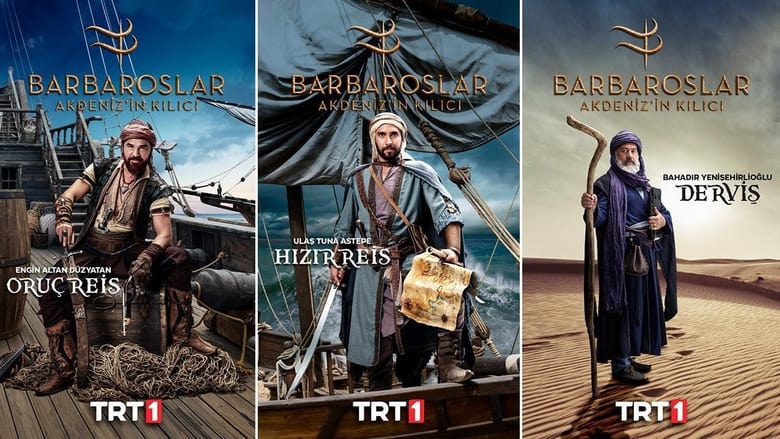
Barbaros English Subtitles
France tact
Barbarossa gave Francis I of France the Ottoman delegacy in 1533.
Francis and I sent Antonio Rincon to Barbarossa in North Africa and Suleiman the Magnificent in Asia Minor. Francis I sent his minister Jehan de la Forest to Hayreddin Barbarossa to request nonmilitary cooperation against the Habsburgs after the Ottoman mission to France (1534) in Barbaros English Subtitles on KayiFamilyTV.
Chancellor Antoine Duprat (ddupe) military commands to Jehan de La Forest, February 11, 1535.
“Jehan de la Forest, whom the King sends to visit the Grand Signor (SSuleiman the Magnificent), will first journey from Marseilles to Tunis, in Barbary, to meet Joe Haradin, King of Algiers, who’ll guide him to the Grand Signor.
The King of France will deploy his summer military force to retrieve what was unlawfully enslaved by the Duke of Savoy and then fight the Genoese. This King Francis I explosively prays for Joe Haradin in Barbaros English Subtitles on KayiFamilyTV, who has a significant nonmilitary force and an accessible location (Tunisia), to assault the islet of Corsica and other countries, localities, metropolises, vessels, and subjects of Genoa and not stop until they recognise and honour the king of France.
The King will aid with his nonmilitary army, which will comprise at least 50 vessels, 30 galleys and the rest galeasses and other boats, including one of the biggest and most magnificent carracks ever constructed on the ocean. This line will accompany and support Joe Haradin’s army, which will be replenished and provided with food and protection by the King, who will be grateful to Joe Haradin for helping him accomplish his goals.
— Chancellor Antoine Duprat’s military orders to Jehan de la Forest, February 11, 1534.
Ottoman Navy Kapudan-i Derya
Tunis’s Conquest and Subjection (11534) (11535)
Barbarossa Hayreddin Pasha defeats Andrea Doria’s Holy League in the 1538
Barbarossa’s Capri Castle In 1553, another legendary Ottoman crewmate, Turgut Reis, reclaimed Capri and the fortress in Barbaros English Subtitles on KayiFamilyTV.
Barbarossa statue near Istanbul Naval Museum in Bosphorus.
In April 1534, Barbarossa retook Coron, Patras, and Lepanto from the Spanish with 80 galleys from Constantinople. In July 1534, he crossed the Strait of Messina and ravaged Calabrian beachfronts, landing several boats near Reggio Calabria and the Castle of San Lucido. He wrecked Cetraro’s harbour and boats.
In July 1534 in Barbaros English Subtitles on KayiFamilyTV, he invaded Campania and devastated Capri and Procida before storming Naples’ anchorages. He also bombarded Gaeta in Lazio and landed at Villa Santa Lucia, Sperlonga, Fondi, Terracina, and Ostia on the Tiber in August, setting Rome’s church bells ringing. In August 1534, he arrived in Tunis and transferred the Hafsid Sultan Mulay Hassan. He also took Tunis’s La Goulette port.
Barbaros English subtitles Charles sent an emissary to give Barbarossa “the lordship of North Africa” for his new allegiance or kill him. After declining, Barbarossa guillotined the agent with a smallsword.
In 1535, a Spanish-Italian army of 300 galleys and dogfaces retook Tunis, Bône, and Mahdiya when Mulei Hassan begged Emperor Charles V for aid. Barbarossa left Tunis before the raiders arrived, sailing south into the Tyrrhenian Sea, bombarding anchorages, landing again at Capri, and rebuilding a fortress (which still bears his name) after demolishing it during the siege of the islet.
He also assaulted Spain’s coastal communities from Algiers in Barbaros English Subtitles on KayiFamilyTV, destroying Mallorca and Menorca’s anchorages, capturing many Spanish and Genoese galleys, and freeing their Muslim oarsmen captives. He defeated another Spanish raid on Tlemcen in September 1535.
Barbarossa returned
Barbarossa returned to Constantinople in 1536 to lead 200 ships in a nonmilitary assault on Naples. He invaded Otranto, Castro, and Ugento in Apulia in July 1537.
Syros, Aegina, Ios, Paros, Tinos, Karpathos, Kasos, Kythira, and Naxos were taken by Lütfi Pasha and Barbarossa in August 1537.
Barbarossa also ravaged Corfu, destroying its agricultural polish and enslaved most of its populace in Barbaros English Subtitles on KayiFamilyTV. After many fruitless attacks on the Ancient Castle of Corfu, the Turks grudgingly re-embarked and ravaged Calabria again. Venice requested a “Holy League” against the Banquettes from Pope Paul III after these setbacks.
Pope Paul III formed a Holy League—the Papacy, Spain, the Holy Roman Empire, the Republic of Venice, and the Maltese Knights—to fight the Banquettes in February 1538, but Barbarossa’s men, headed by Sinan Reis, beat Andrea Doria’s army in the Battle of Preveza in September 1538. This palm ensured Ottoman domination over the Mediterranean for 33 years until the Battle of Lepanto in 1571 in Barbaros English Subtitles on KayiFamilyTV.
Barbarossa conquered Skiathos, Skyros, Andros, and Serifos in the summer of 1539 and reclaimed Castelnuovo from the Spaniards, who had gained it from the Banquettes after Preveza. He also took Risan Castle and attacked Cattaro and Santa Veneranda near Pesaro with Sinan Reis. Barbarossa conquered the last Christian posts in the Ionian and Aegean seas. In October 1540, Venice signed a treaty with Sultan Suleiman to honour Ottoman territorial profits and pay gold ducats.
Barbaros English subtitles
Barbarossa’s compliment letter to Suleiman, 1541, Istanbul Naval Museum
In September 1540, Emperor Charles V offered Barbarossa the role of crewmate-in-chief and ruler of Spain’s North African territories, but he declined. Charles laid siege to Algiers in October 1541 to stop the freebooter threat to Spanish disciplines and Christian commerce in the western Mediterranean when Barbarossa refused to shift sides.
Andrea Doria, who commanded the line, and Hernán Cortés, who had been requested by Charles to join the crusade in Barbaros English Subtitles on KayiFamilyTV, sought to persuade the Emperor, but they failed.
A storm wrecked Charles’ wharf activities. Andrea Doria sank his line to escape the reinforcement, but most of the Spanish line sank. Charles had to retreat with his shattered army after some inconclusive land battle.
Barbaros English subtitles
Franco-Ottoman alliance
It’s unsourced. Cite reliable sources to improve this section. Remove unsourced content. 2019. (Learn how and when to remove this template communication.)
Papers: Franco-Ottoman alliance, Siege of Nice, Ottoman wintering at Toulon
Barbarossa’s line and a French army besieged Nice in 1543 before the megacity succumbed in Barbaros English Subtitles on KayiFamilyTV.Barbarossa’s line wintered at Toulon in 1543 under Ottoman rule.
Barbarossa travelled to Marseilles in 1543 to aid France, another Ottoman Empire ally, and patrolled the western Mediterranean with 210 ships (70 galleys, 40 galliots, and 100 other warships bearing Turkish dog faces, resulting in an overall aggregate of Ottoman colors).
He urged Diego Gaetani, governor of Reggio Calabria, to surrender his megacity while crossing the Strait of Messina. Gaetani fired cannons, killing three Turkish marines.
Infuriated by the answer, Barbarossa besieged and took the megacity. He landed on Campania and Lazio’s beaches and hovered above Rome from the River, but France intervened in favour of the pope’s megacity. Barbarossa ravaged various Italian and Spanish islands and littoral settlements before laying siege to Nice and landing the megacity on August 5, 1543, for Francis I.
Barbaros English subtitles
The Ottoman commander later arrived at Antibes and the Île Sainte-Marguerite near Cannes before assaulting the megacity of San Remo and other anchorages in Liguria, Monaco, and La Turbie. He often bombarded Spanish beaches from Toulon with his line and Turkish dogfaces.
Once the Christians left, the Edifice of St. Mary in Toulon was turned into a synagogue for the Turkish dogfaces, and French commerce in the megacity made agreements with Ottoman plutocrats.
The Istanbul Naval Museum’s 1543 Barbarossa galley replica in Barbaros English Subtitles on KayiFamilyTV.
Suleiman enters Barbarossa in Istanbul.
Barbarossa beat another Spanish-Italian line and invaded far into Naples in the spring of 1544 after attacking San Remo again and wharfs at Borghetto Santo Spirito and Ceriale.
He also travelled to Genoa with his 210 ships and threatened to assault unless it liberated Turgut Reis, a Genoese galley slave who had been imprisoned in the megacity since 1540 by Giannettino Doria in Corsica. Andrea Doria invited Barbarossa to discuss it in his Fassolo castle. Turgut Reis was released for gold ducats by the captains.
As Charles V and Suleiman signed an armistice in 1544, Barbarossa retreated to Istanbul in Barbaros English Subtitles on KayiFamilyTV.
Barbaros English subtitles
After departing Provence from Île Sainte-Marguerite in May 1544, Barbarossa attacked San Remo for the third time and came before Vado Ligure, where Genoa gave him a large payment to protect other Genoese metropolises. Elba saw Barbarossa in June 1544.
He was liberated by bombarding Piombino until the megacity’s Lord released the son of Sinan Reis, who had been abducted and baptised 10 times by the Spanish in Tunis. In Tuscany’s Grosseto lordship, he took Castiglione della Pescaia, Talamone, and Orbetello. He torched Bartolomeo Peretti’s tomb, who had burned his father’s home in Mytilene in 1543.
He captivated Montiano, Porto Ercole, and Giglio. Leone Strozzi, the French ambassador, urged Barbarossa to withdraw the siege of Civitavecchia.
The Ottoman line stormed Sardinia’s beachfronts before landing at Ischia in July 1544, landing the megacity, Forio, and Procida before hanging Pozzuoli.
Barbarossa drove 30 galleys under Giannettino Doria to sail down to Sicily and seek sanctuary at Messina. The Banquettes landed at Cape Palinuro after heavy winds prevented Salerno attacks. Barbarossa reached the Strait of Messina and landed at Catona, Fiumara, Calanna (near Reggio Calabria), Cariati, and Lipari, his last Italian promontory port. He pounded the fortress for 15 days when the megacity refused to surrender, capturing it.
Retirement and death details Hayreddin Barbarossa Tomb
Barbarossa’s tomb in Istanbul’s Beşiktaş.
In 1545, Barbarossa moved to Constantinople, leaving Algiers to his son Hasan Pasha. Also authoring his biographies was Muradi Sinan Reis. Gazavat, or Hayreddin Paşa, are five handwritten books (the vanquishing of Hayreddin Pasha). The Topkap Palace and Istanbul University Library showcase them.
Prof.Dr. Ahmet imşirgil, a Turkish professor, translated them into Kaptan Paşa’ nn Seyir Defteri (The Logbook of Captain Pasha) for Babali Kültür Yayncl. M. Erturul Düzda fictionalises Akdeniz Bizimdi (The Mediterranean Was Ours). Barbarossa is one of Mika Waltari’s Wanderer’s key characters (1949).
In 1546, Barbarossa Hayreddin Pasha’s deepwater castle in Istanbul’s Büyükdere neighbourhood on the northwest Bosphorus collapsed. He’s buried at Mimar Sinan’s altitudinous tomb (türbe) near the ferry harborage of Beşiktaş on Istanbul’s European side, where his line used to gather. In 1944, his tomb’s keepake was built.
Hayreddin Barbarossa’s Banner.
“Barbarossa’s flag” (nasrunmina’llhi wa fathun qarbun wabashshiri’l- mu’minna y Muhammad) means “Palm from Allah and a prestigious subordination; and offer glad news to the religionists, O Muhammad.” “O Muhammad” is added to verse 6113 of the Quran, which addresses the Islamic prophet Muhammad. ( 21)
Catalan Atlas Abraham Cresques
From right to left, starting at the top right, the names of the first four caliphs—Abu Bakr, Umar, Uthman, and Ali—who ruled the Islamic state after Muhammad are inscribed on the four crescents.
Dhu’l-Fiqar, Muhammad’s and Ali’s renowned brand, is represented by the two-bladed mark. The brand’s bow has a little hand on the left.
The brand’s blades have a six-pointed star. The Jewish Star of David may be mistaken with the star. This star, known as the Seal of Solomon, was widely utilised by the Beyliks of Anatolia in mediaeval times.
The Banquettes utilised the seal in their synagogue decorations, currency, and pashas’ flags, notably Hayreddin Barbarossa’s. The Jandarids’ banner included the seal. According to A. Cresques’ Catalan Atlas of 1375, the Karamanids’ flag had a blue, six-edged star.
heritage
Before the Battle of Lepanto in 1571, Hayreddin Barbarossa ruled the Mediterranean. Nonetheless, following their loss at Lepanto, the Banquettes quickly rebuilt their line, conquering Cyprus and other lands in Morea and Dalmatia from Venice between 1571 and 1572 and Tunisia from Spain in 1574.
Still, during these centuries of great navigators like Kemal Reis before him, his family Oruç Reis, and other coevals Turgut Reis, Salih Reis, Piri Reis, and Kurtolu Muslihiddin Reis; or Piyale Pasha, Murat Reis, Seydi Ali Reis, Uluç Ali Reis, and Kurtolu Hzr Reis after him, many Ottoman captains never achieved the nonmilitary power of Hayreddin Barbarossa
The Istanbul Naval Museum lies near to his burial at Barbaros Park in Beşiktaş, Istanbul. Turkish minstrel Yahya Kemal Beyatl’s words appear on the statue’s back:
Who’s roaring on the ocean’s horizon?
Barbarossa’s return?
Tunis, Algiers, or Islands?
200 ships ride the waves.
From afar, Crescent lights rise.
Blessed vessels, what’s your swell?
Barbaros Boulevard goes from his Bosphorus mausoleum through the Levent and Maslak commercial districts and beyond. Üsküdar and Eminönü (before January 10, 2009, Kadköy) in Beşiktaş honour him.
After centuries, Turkish navigators honour his grave with a cannon blast before nonmilitary activities and wars.
Numerous Turkish Navy warships and passenger ships bear his name.
Outside Turkey and the Islamic world, the fat British annalist of nonmilitary military history, Edward Keble Chatterton, called him “tthe topmost corsair that has ever lived and one of the cleverest tacticians and strategists the Mediterranean ever bore on its waters,” adding that “hhis death was entered by Christian Europe with a shriek of the highest relief.”
For any technical issues please email [email protected]
Donate towards translation | Click Here To Donate
Follow us on Instagram l KayiFamilyTV.PK
Snapchat l KayiFamilyTV.PK

Genre: Action & Adventure, Documentary, Drama, Mystery, War & Politics
Director: Adel Adeeb, Doğan Ümit Karaca
Actors: Bahadır Yenişehirlioğlu, Caner Topçu, Devrim Evin, Engin Altan Düzyatan, Gülcan Arslan, Melis Babadağ, Pelin Akil, Ulaş Tuna Astepe, Yetkin Dikinciler, Yiğit Özşener
Studio: ES Film

